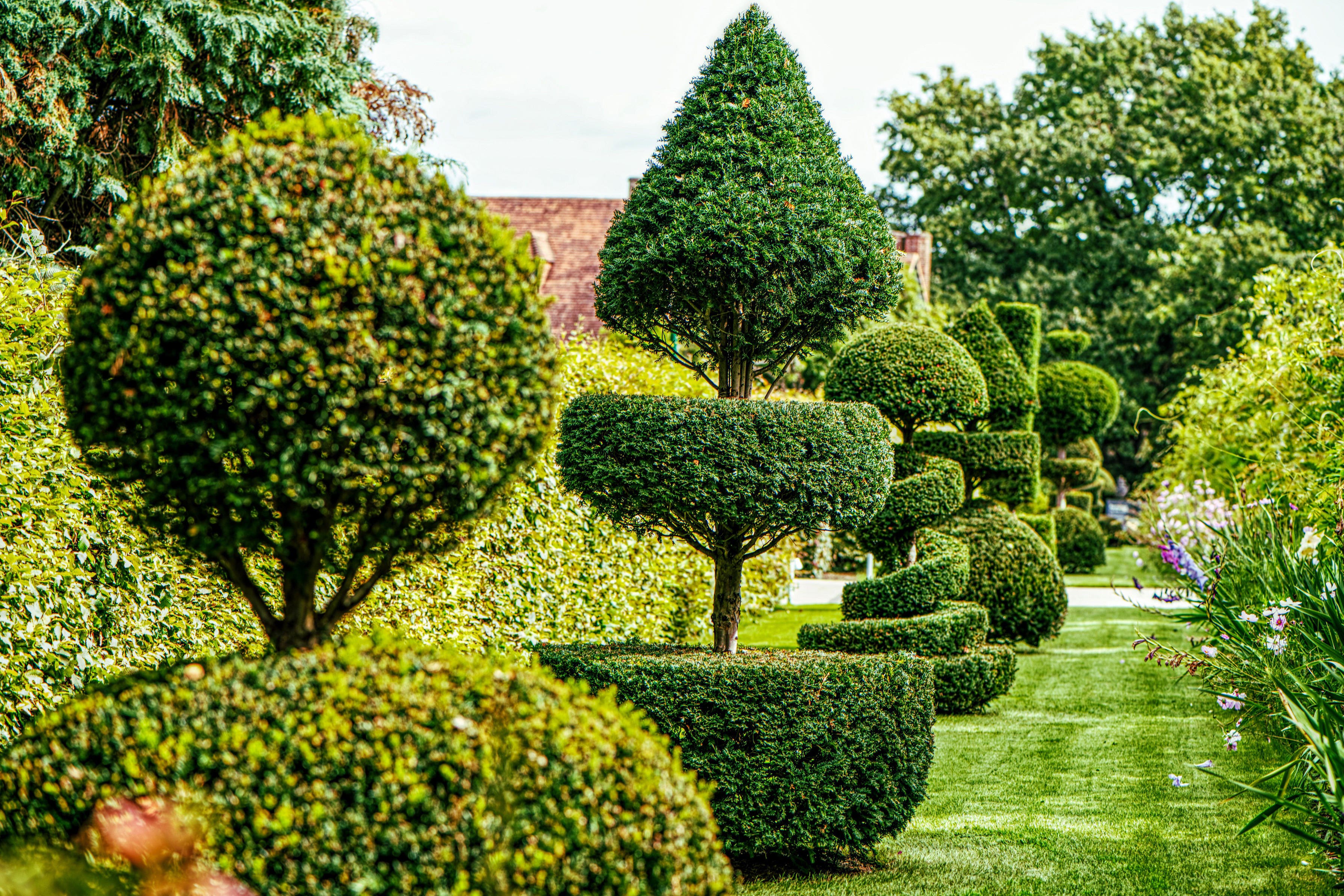A beginner’s guide to topiary
Cones, balls and clouds are all possible.

If you’ve ever wandered around country estates admiring giant animals and other weird and wonderful topiary shapes, you may think it’s way out of reach in your own outdoor space.
Yet creating simple topiary in regular gardens can offer year-round interest and structure, even in the smallest space.
Chris Crowder, head gardener at Levens Hall and Gardens, the world’s oldest topiary garden, in Kendal, Cumbria, offers the following tips for beginners…
What evergreens should you use?
“The best two have been yew and box because they are evergreens, so they always look good and naturally they are trees and shrubs that used to grow in the shade under other trees,” Crowder advises.
“Yews are used to a bit of shade, so you can make a form and the lower parts stay fully clothed with leaves.”
Yew and box also have little leaves, so when you trim them it’s not as obvious as if you trim a larger-leaved shrub like laurel, he adds. Shrubby honeysuckle (lonicera nitida) grows fast and can be a good topiary subject, although you will have to clip it quite a few times during the year, unlike box and yew, where you may get away with one clip a year.
“Plant them small and grow them into a shape, working your way upwards and outwards. Topiary is like a journey. You’re never finished, they’re always developing. You clip it back and it might be bigger one year than another. Let the roots establish for a year after planting and then go at it with secateurs or clippers.”
What tools do you need?
“You can get little battery trimmers, but a pair of hand shears are just the job for smaller topiary.”
Which is the best shape for beginners?
Cones, cubes or rounded shapes are best, he says.
Try cloud pruning
“This is rounding off a shrub to make billowing, cloud-like shapes. It’s a relatively recent popular way of shaping. Imagine a load of box balls, blobbed together like bubbles, and shape around the outline to make a billowing cloud-like shape which can make a good garden feature.
“There’s no set shape, you are not trying to get a particular measure across or angle, so nobody can say it looks a bit out.”
Have a go with a formal cone
“Often a cone is a good place to start, with a pointed top. They never look good when you first start because when you trim the whole idea is that next year, wherever you’ve cut them back to, half a dozen shoots grow out. Each season whatever shape you make improves,” Crowder says.
“At first they may look rough but if you persist, all the gaps get filled in by the growth from below and you end up with the smooth surface that topiary is supposed to have.”
When making a yew cone, you will need multiple uprights (stems) and one central leader, and cut out all the competition. “I’d usually have a straight stick or a cane or something like that to put against it just to remind me of what the straight edge is, then a walk around it a few times, take a bit off, stand back and have a look and take a bit more off. Bring it up to a point,” he advises.
Once you have a cone established you can progress to a helter skelter by walking round in a circle or putting a length of string where the line should be and incising the line all the way round.
Should you use a wire frame?
“I wouldn’t dream of putting wire inside any shapes, because in years to come the wire cuts into the growth, or cuts into the branches. But I suppose it does give the instant effect of where you are going to.” Instead Crowder favours doing it by eye.
What if you go wrong?
“It doesn’t matter, because in a few months it will fill out and grow on.”
Be patient
“You only need to clip away once or twice a year, so they are not very high maintenance, but you are hand-crafting elements, creating something over a period of years,” Crowder says.
How long will a shrub take to be recognised as topiary?
“Maybe a year or two years. The more often you clip it, the more it will grow and fill out the holes. It becomes something a lot faster that way. Just trim it when it grows out. We trim our topiary from September onwards but we haven’t got time to do everything twice,” Crowder says.
“Keep your trimmers sharp and keep them wet. The sap and the gum of plants can make it hard work and you can end up not having such a sharp cut across the leaves, so we keep spraying our hedge shears with water and it removes that green sappy gum that builds up and they seem to clip much sharper.”
For more information on Levens Hall and Gardens, visit levenshall.co.uk
Subscribe to Independent Premium to bookmark this article
Want to bookmark your favourite articles and stories to read or reference later? Start your Independent Premium subscription today.
